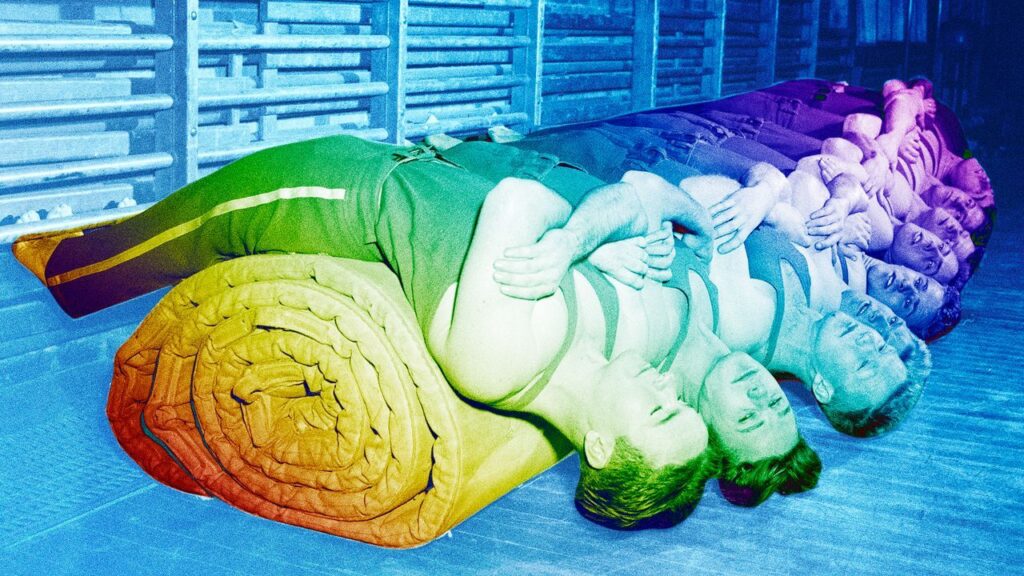1. Stand in a doorway. Cross one leg over the other leg.
2. Reach toward the side with the leg that’s in front.
3. Push onto the doorway. Hold for between 10 and 30 seconds. Then, switch legs to stretch out the other side of your back.
5. Dynamic side plank
Once you’re ready for a lower back stretch with a little more intensity, Dr. Chan-Fata recommends giving this one a try. It strengthens the core, which helps prevent lower back pain by contributing to proper posture and putting less strain on the lower back. The dynamic side plank is also a good way to target your left lower back muscles and right lower back muscles.
1. Lie on your right side, resting your right elbow on the floor directly under your shoulder. Keep your legs straight, stacking one on top of the other.
2. While engaging your core, lift your hips off the ground. Slowly lower them back down.
3. Do 5 to 10 reps. Then, switch sides.
6. Medicine ball hip hinge
If you play golf, tennis or any other sport that requires continuously twisting the lower back, Dr. Chan-Fata recommends this hip hing rotation, which requires a medicine ball.
1. Stand up straight with your legs hip-distance apart. Wrap your arms around the medicine ball.
2. Sit your hips back, bend your knees slightly and lean your torso slightly forward, like you’re doing a deadlift.
3. Rotate to the left. Hold for a few seconds. Then, rotate to the right and hold for a few seconds.
7. Elevated pigeon stretch
If you’ve ever taken a yoga class, there’s a good chance that you’re familiar with pigeon pose. Dr. Chan-Fata says the elevated pigeon stretch is a more comfortable version of it—especially if you’re tall—and is a great way to stretch the back of the hips and lower back at the same time. Since this move targets the hip flexors, glutes, and piriformis muscles, it helps improve mobility in the hips while strengthening the lower back. If you’re currently experiencing lower back pain or soreness, pigeon pose can give some relief.


